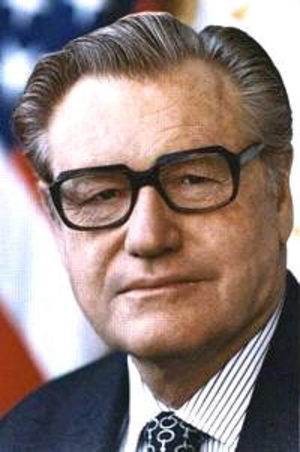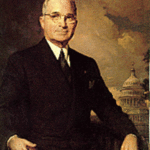Americans have never thought to much about vice presidents. Even today their power is nothing compared to that of the president, and in the earliest years of our nation they had little to do at all.
The Constitution provides that when a President dies or is removed from office, the Vice President takes over his duties. But it says nothing of who will take over the office of the Vice President. Sure, the Vice President’s duties as President of the Senate would be taken over by the President Pro Tempore (elected by the Senate), but he would not be Vice President.
Throughout the years many actions have been taken to try to improve the process of Presidential succession, but until the 1960’s not a word had been said about the issue of Vice Presidential succession.
When a Vice President became President (which has happened many times in our country), the office of the Vice Presidency was simply left blank until the next election came around. Should a Vice President die or resign from office, the same thing. In the roughly 218 years since George Washington became the first President of the United States, the office of the Vice Presidency has been vacant for roughly 40 of those years.
The problem of what to do with an empty Vice Presidency had been recognized for some time, but the debate never lead to a process of filling the actual vacancy. Rather these debates created new rules for Presidential Succession, skipping over the Vice Presidency if the Vice Presidency should be empty. The most important task of a Vice President, after all, was taking over for the President in case of his absence. No one thought it important that we always have an actual Vice President.
This finally came to an end in 1967, with the passage of the 25th Amendment to the Constitution. It was a dangerous time, during the height of the Cold War, four years after the assassination of President John F. Kennedy. The 25th Amendment sought not only to fix the process of Presidential Succession but also, for the first time, put in place a system for Vice Presidential Succession.
Under the new amendment, in the case of a Vice Presidential vacancy the office would be filled by a nomination from the President. This nomination would have to be approved by a majority vote of both houses of Congress.
Since the passage of the 25th Amendment, two Vice Presidential vacancies have been filled in this manner. The first came in 1973, after Spiro Agnew resigned from office to his scandal involving both bribery and tax evasion during his tenure as Governor of Maryland. He was succeeded by Congressman Gerald Ford.
Less than a year later, Richard Nixon resigned from the Presidency as a result of the Watergate scandal. His appointed Vice President, Gerald Ford, became president, once again leaving a vacancy in the Vice Presidential seat. It was filled by Ford’s nomination of Nelson Rockefeller. Ford and Rockefeller are the only two Vice Presidents of the United States not to have been elected to the position.



